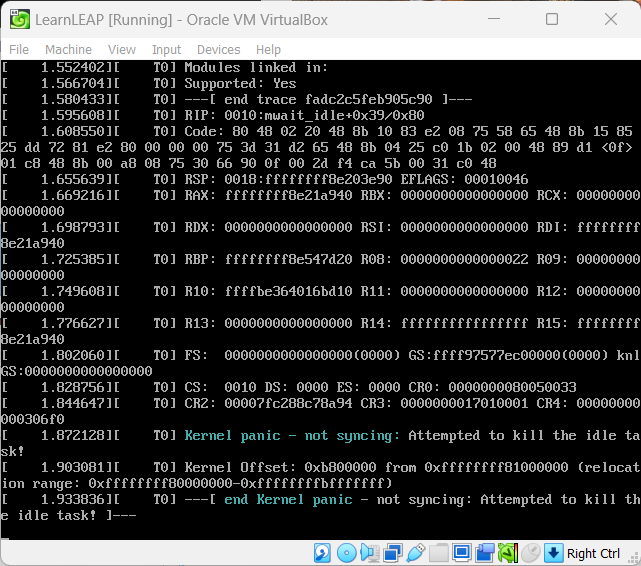There are two types of system failures on a Linux system, and really any system with an operating system: Driver and Kernel failure. When you have a kernel failure on a Linux system you will see the words “Kernel Panic.”

There are a few ways to approach a kernel panic depending on how you’re using the operating system. In this case, I had to tweak a setting in OpenVM. You need to use more than one CPU core to run any virtual environment. There are good and short youtube videos that show you the entire process. When you’re not using a VM environment there are usually live cds that you can use in a worst case scenario to restore an operating system to a working state. Sometimes, you can also boot into a safemode like Windows and do all your work that way too. Lastly, if you’re working with a server and you need to restrict access you can use a single user mode during the GRUB bootup process.
The above video shows you how to tell GRUB to boot into single user mode. I used an arrow key to stop GRUB from autobooting, and then pressed ‘e’ to get into the menu required to edit the booting options. As the menu says, “ctrl + x” temporarily saves your options and lets you boot with your desired method. Lastly, the video uses Runlevel to show that I went from a normal user (run level 5 on Fedora) to a single user runlevel (runlevel 1 on Fedora). The numbers do change a little based on distribution, so that might be worth remembering.
As frustrating as kernel panics can be, driver failures are not necessarily any better. It is very easy if you are not careful to get yourself into ‘dependency hell (DLL hell on Windows)’. Dependency hell occurs when you cannot find a package that an application requires to run or end up with various dependencies simultaneously you cannot solve causing a nasty loop. Usually if you’re having driver or dependency issues the solution is to backup to a working version, file a bug report if you care enough, and keep an eye out for updates.
If you buy anything from Amazon using the link below I may receive a commission from your purchase at Amazon.
Tech Best Sellers at Amazon